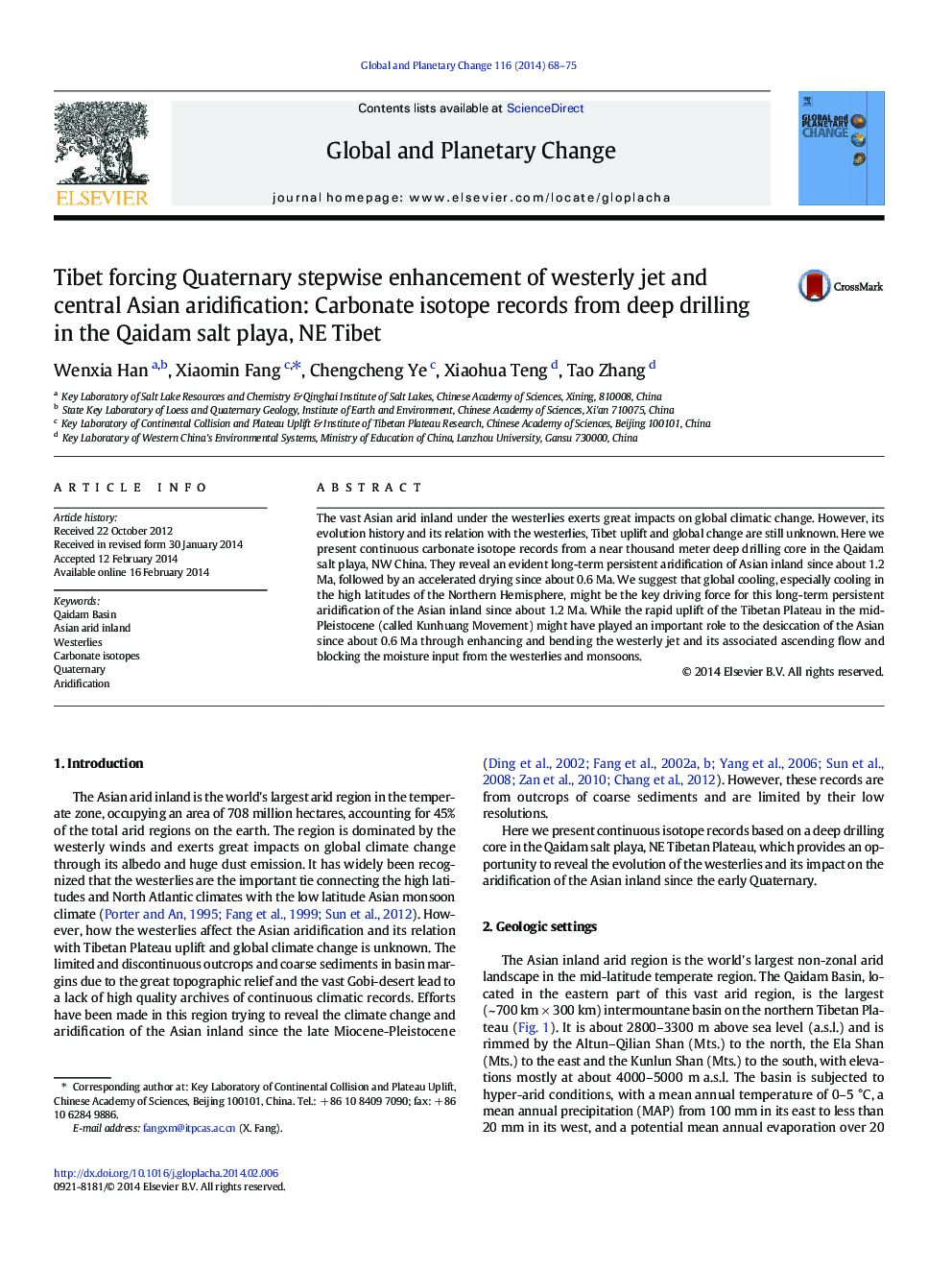| Article ID | Journal | Published Year | Pages | File Type |
|---|---|---|---|---|
| 6348236 | Global and Planetary Change | 2014 | 8 Pages |
Abstract
The vast Asian arid inland under the westerlies exerts great impacts on global climatic change. However, its evolution history and its relation with the westerlies, Tibet uplift and global change are still unknown. Here we present continuous carbonate isotope records from a near thousand meter deep drilling core in the Qaidam salt playa, NW China. They reveal an evident long-term persistent aridification of Asian inland since about 1.2Â Ma, followed by an accelerated drying since about 0.6Â Ma. We suggest that global cooling, especially cooling in the high latitudes of the Northern Hemisphere, might be the key driving force for this long-term persistent aridification of the Asian inland since about 1.2Â Ma. While the rapid uplift of the Tibetan Plateau in the mid-Pleistocene (called Kunhuang Movement) might have played an important role to the desiccation of the Asian since about 0.6Â Ma through enhancing and bending the westerly jet and its associated ascending flow and blocking the moisture input from the westerlies and monsoons.
Related Topics
Physical Sciences and Engineering
Earth and Planetary Sciences
Earth-Surface Processes
Authors
Wenxia Han, Xiaomin Fang, Chengcheng Ye, Xiaohua Teng, Tao Zhang,
